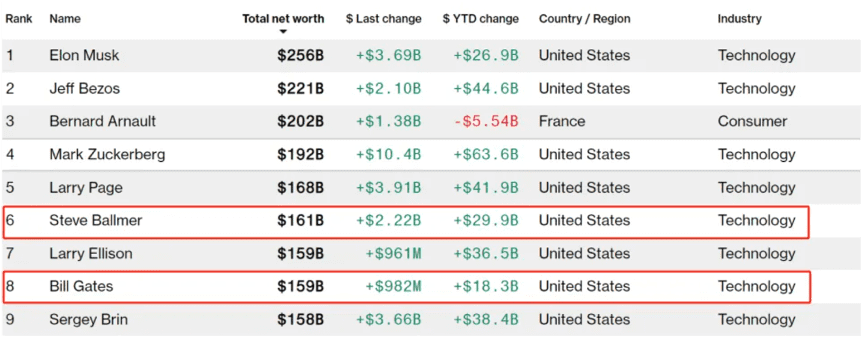
WhatsApp's new feature will let Meta AI edit your photos for you
WhatsApp beta version 2.24.14.20 has a new feature that allows users to share photos with Meta AI. The AI chatbot will analyze uploaded images and provide information or context about the content. Users may be able to request specific edits to their photos directly through Meta AI, though the extent of this feature is still unknown. As the battle for AI dominance heats up, Meta is adding a new trick to its AI chatbot, Meta AI, which is already part of Facebook, Instagram, and WhatsApp. While Meta AI already has impressive text capabilities, such as replying to questions, suggesting captions, and holding conversations, users cannot currently share or upload photos to the Meta AI chat. WaBetaInfo has uncovered the exciting new feature in the WhatsApp beta for Android version 2.24.14.20. This feature will allow Meta AI to interact with photos shared by users, reply to photos, and even edit them. As shown in the attached screenshot, WhatsApp is testing a new camera button in the Meta AI chat, designed to function similarly to the camera button in regular chats. This addition will allow users to manually share photos with Meta AI, a capability that is currently unavailable. With this new functionality, users will be able to ask questions about their photos, presumably allowing users to ask the AI to identify objects or locations or provide context about the photo’s content. Moreover, the screenshot suggests that Meta AI will also offer the option to edit photos, enabling users to make changes to their images directly within the chat by sharing a prompt. The exact scope of this image editing feature remains unclear, leaving us to wonder if it will be limited to simple tweaks or if it will unleash a powerful AI-driven photo editing suite. The possibilities are both exciting and intriguing, and this feature could definitely be a big hit, especially if it performs as promised. While this new image-sharing feature would mean Meta will analyze and face-scan the photos you upload, the screenshot includes a disclaimer indicating that users will have the option to delete their photos whenever they want. As of now, it seems that the feature is still in development, so it might be some time before we finally get to see it roll out publicly. Recently, we also reported about WhatsApp working on an “Imagine Me” feature that would allow Meta AI to generate AI avatars of you based on a set of your photos. WhatsApp in our newsletters WhatsApp is a leading messaging app, keep up to date on the latest, and learn about more Android apps today!

Kris Jenner Shares Plans to Remove Ovaries After Tumor Diagnosis
Kris Jenner is opening up about her health. The reality star shared plans to have her ovaries surgically removed after she was diagnosed with a tumor on one of the organs. “I went to the doctor and I had my scan," she tearfully told daughters Kim Kardashian, Khloe Kardashian and Kendall Jenner on the July 4 episode of The Kardashians. "They found a cyst.” Kris continued, "They said I gotta have my ovaries taken out." While the 68-year-old—who is also mom to kids Kourtney Kardashian, Rob Kardashian and Kylie Jenner—wasn't nervous about the procedure, she did feel very emotional over having to part with her ovaries because, as she put it, "that’s where all my kids were conceived." "It’s also a thing about getting older," Kris noted. "It’s a sign of 'we’re done with this part of your life.' It’s a whole chapter that’s just closed.” She added in a separate confessional, “People often ask me what is the best job you’ve ever had, and I always say mom. The biggest blessing in my life was being able to give birth to six beautiful kids.” And in true Kardashian fashion, Kris' family quickly rallied behind her. After Kourtney called in to check on Kris, the Poosh founder said in a confessional, "I totally understand how my mom is feeling because I would feel the same way." "It’s your womanly power," Kourtney continued. "It doesn’t mean it’s taking away who she is or what she’s experienced, but I would feel this sentimental feeling of what it’s created.” Likewise, Kim empathized with Kris, saying that she feels "really sad for her." "To have a surgery and remove your ovaries is a really big deal," the SKIMS mogul shared. "I couldn’t even imagine being in that situation.” Kris' longtime boyfriend Corey Gamble also showed his support, surprising the momager with a special gift to “help your energy."

Morning Bid: Eyes switch to inflation vs elections, Powell up
A look at the day ahead in U.S. and global markets from Mike Dolan After an intense month focused on election risk around the world, markets quickly switched back to the more prosaic matter of the cost of money - and whether disinflation is resuming to the extent it allows borrowing costs to finally fall. Thursday's U.S. consumer price update for June is the key moment of the week for many investors - with the headline rate expected to have fallen two tenths of a percentage point to 3.1% but with 'core' rates still stuck at 3.4%. With Federal Reserve chair Jerome Powell starting his two-pronged semi-annual congressional testimony later on Tuesday, the consensus CPI forecast probably reflects what the central bank thinks of the situation right now - encouraging but not there yet. But as the U.S. unemployment rate is now back above 4.0% for the first time since late 2021, markets may look for a more nuanced approach from the Fed chair that sees it increasingly wary of a sudden weakening of the labor market as real time quarterly GDP estimates ebb again to about 1.5%. There were some other reasons for Fed optimism in the lead up to the testimony. The path U.S. inflation is expected to follow over coming years generally softened in June, amid retreating projections of price increases for a wide array of consumer goods and services, a New York Fed survey showed on Monday. Inflation a year from now was seen at 3% as of June - down from the expected rise of 3.2% in May - and five-year expectations fell to 2.8% from 3%. Crude oil prices are better behaved this week, too, falling more than 3% from the 10-week highs hit late last week and halving the annual oil price gain to 10%. The losses on Tuesday came after a hurricane that hit a key U.S. oil-producing hub in Texas caused less damage than many in markets had expected - easing concerns over supply disruption. Before Powell starts speaking later, there will also be an update on U.S. small business confidence for last month.

When Amazon also started upgrading "refund only"
Amazon official said that the freight from the Chinese warehouse will be lower than the traditional FBA(Fulfillment by Amazon) fee, similar to the domestic air delivery small package service, which will undoubtedly greatly reduce the logistics costs of sellers. In addition to logistics, Amazon is also responsible for promotion and traffic, of course, sellers can still independently carry out product advertising, pricing and promotion activities, to maintain the personalized and independent brand. Many industry insiders said that Amazon launched the "low-price store" move to fight China's cross-border e-commerce platforms Temu, Shein, AliExpress and so on. Although it provides another platform for China's e-commerce to go to sea, many sellers said that the cost of settling in Amazon cross-border e-commerce has become lower, and they have asked about the conditions of settling in, but the rules look down, in fact, it is not so friendly for sellers.

Former Microsoft CEO Ballmer wealth surpassed Gates, he only did one thing
On July 1, former Microsoft CEO and President Steve Ballmer surpassed Microsoft co-founder Bill Gates for the first time on the Bloomberg list of the world's richest people to become the sixth richest person in the world. According to the data, as of the same day, Ballmer's net worth reached $157.2 billion, while Gates's wealth was $156.7 billion, falling to seventh place. The latest figures, as of July 6, show that Ballmer's wealth has grown further to $161 billion, and Gates' wealth is $159 billion. This is the first time Ballmer's net worth has surpassed Gates', and it is also the rare time in history that an employee's net worth has surpassed that of a company founder. Unlike Musk, Jeff Bezos and others, Ballmer's wealth was not accumulated through entrepreneurial success as a business founder, but simply because he chose to hold Microsoft "indefinitely." As Fortune previously reported, Ballmer is the only individual with a net worth of more than $100 billion as an employee rather than a founder.





